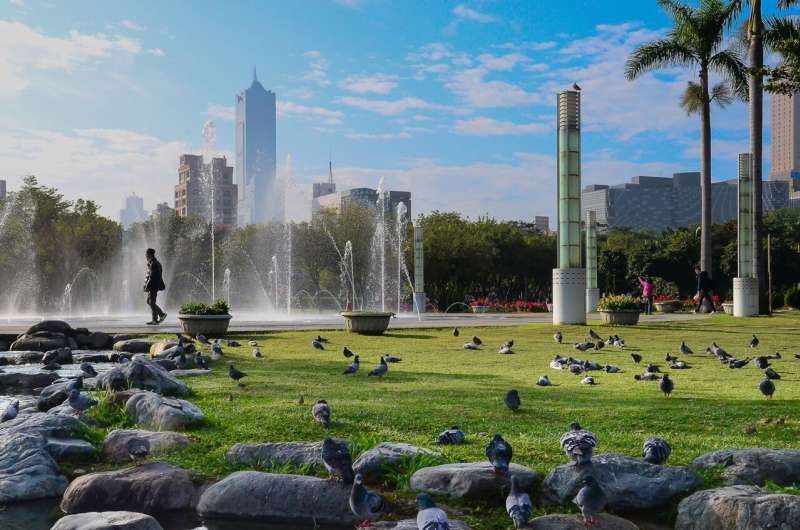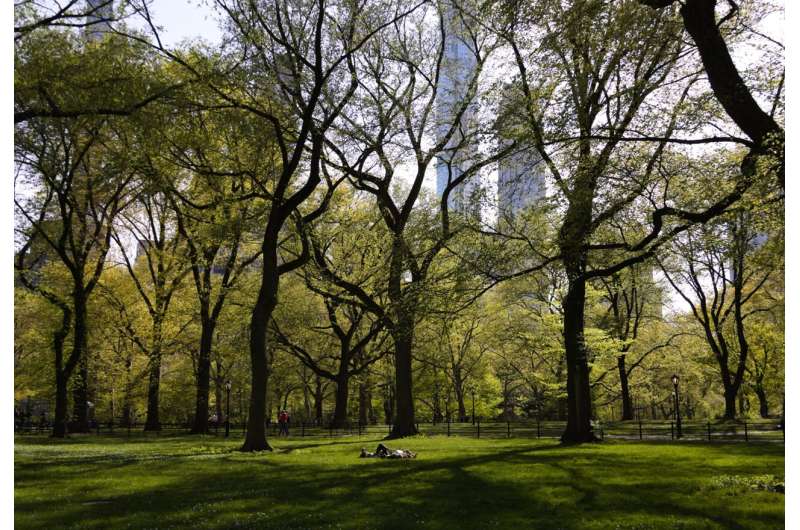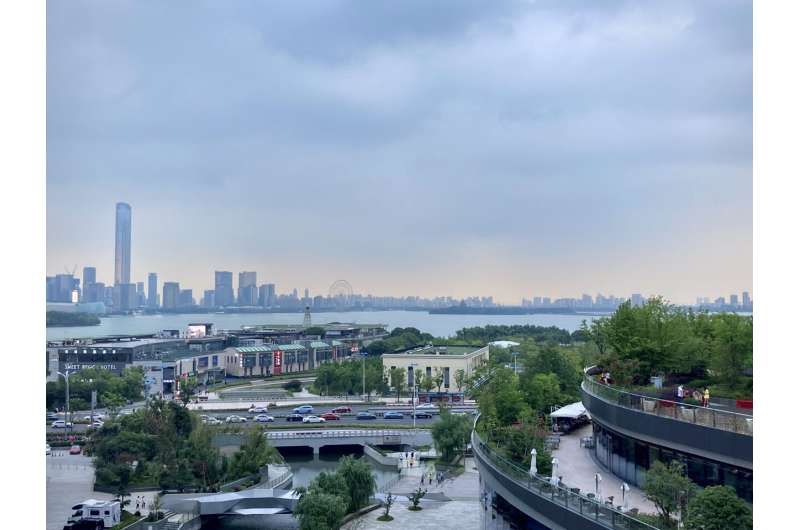This article has been reviewed according to Science X's editorial process and policies. Editors have highlighted the following attributes while ensuring the content's credibility:
fact-checked
peer-reviewed publication
trusted source
proofread
Green spaces can save lives, according to urban big data

Against the backdrop of global climate change, extreme heat events are becoming hotter, longer, and more frequent. Such sustained extreme heat has severely impacted people's health all over the world.
It is generally acknowledged that some urban landscape features, such as green spaces, can offer respite from high temperatures. However, few studies have shown how changing the landscape of a city affects its residents' ability to cope with extreme heat and the effect on mortality.
In two papers, researchers from China, South Africa, and the UK found that green spaces, such as trees lining streets, can alleviate extreme heat's negative impacts on human health.
One of the two papers, "Effect Modifications of Overhead-View and Eye-Level Urban Greenery on Heat-Mortality Associations: Small-Area Analyses Using Case Time Series Design and Different Greenery Measurements," has been published in Environmental Health Perspectives.
The other paper, "Effects of the urban landscape on heat wave-mortality associations in Hong Kong: comparison of different heat wave definitions," has been published in the Frontiers of Environmental Science and Engineering.
They also observed a higher risk of heat wave-associated mortality when buildings are more densely packed together and when the land surface temperature is higher at night.
The research findings provide scientific evidence for policymakers and urban designers to form and implement strategies and health interventions for extreme heat conditions, such as incorporating different types of greenery into cities.
Health-affecting landscapes
The researchers chose to study Hong Kong due to its hot and humid summers as well as its high building and population density. They analyzed mortality, meteorological, and land use data collected between 2005 and 2018.
They found that green spaces have a remarkable ability to protect people from heat-related illnesses, especially under longer and more intense heat waves, says Dr. Jinglu Song, the first and corresponding author of the two papers. Dr. Song is an assistant professor at Xi'an Jiaotong-Liverpool University's Department of Urban Planning and Design.
"Vegetation tends to release more water vapor as the surrounding temperatures rise, thus leading to a better cooling effect of the air around it. Trees, in particular, can also provide shade for residents and pedestrians.

"In contrast, areas with a high density of buildings are hotter as the concrete structures absorb more solar energy and block air from passing between them, thus trapping heat."
Dr. Song continues, "During prolonged heat events, buildings may not be able to completely cool off at night, which increases nighttime temperatures.
"Higher nighttime land surface temperatures can contribute to a more intensive urban heat island effect, a phenomenon where urban areas are hotter than nearby countryside. This can lead to temperatures staying higher for longer," she says.
Age and gender differences
The researchers also found that, during heat waves, older adults (over 65) and men are more likely to be affected by changes made to the urban landscape.
Dr. Song explains, "Older adults tend to engage in fewer heat-adaptive behaviors like turning on fans or air conditioners, taking a shower, or leaving the house.
"Elderly people's daily activities are often within or close to their residential areas. Therefore, they're more susceptible to the surrounding urban landscape.
"Also, due to different gender distributions in industrial sectors, men may work outdoors for longer and are more likely than women to be affected by heat waves in certain situations."

Measuring urban greenery
Urban greenery is usually measured using satellite imaging, however, this often misses aspects people see on the ground. Previous studies may, therefore, have underestimated the health benefits of eye-level urban greenery against extreme heat events.
To overcome these problems, the researchers assessed urban greenery by using data from satellite imagery and Google Street View images. Compared with the assessment of overhead-view urban greenery using satellite images, the eye-level greenery measurement is more accurate in reflecting what people see and access when they walk in the city.
Dr. Song says, "It's difficult to use the satellite images to detect urban greenery like vertical green walls or shrubs and lawns covered by trees. This is why we used panoramic streetscape images from Google Street View to have a more precise understanding of how street-level greenery affects heat mortality."
"Green spaces and foliage along walking streets can improve a pedestrian's thermal comfort in hot weather. It also reduces people's exposure to unhealthy factors like air pollution and traffic noise.
"The design of our cities will become increasingly important in mitigating the risk of heat-associated death in the future as extreme heat events are projected to become more frequent, longer and more intensified."
The studies were conducted by researchers from Xi'an Jiaotong-Liverpool University (XJTLU), China; London School of Hygiene and Tropical Medicine, UK; University of Liverpool, UK; City University of Hong Kong, China; North West University, South Africa; and Zhejiang University, China.
More information: Jinglu Song et al, Effects of the urban landscape on heatwave-mortality associations in Hong Kong: comparison of different heatwave definitions, Frontiers of Environmental Science & Engineering (2023). DOI: 10.1007/s11783-024-1771-z
Jinglu Song et al, Effect Modifications of Overhead-View and Eye-Level Urban Greenery on Heat–Mortality Associations: Small-Area Analyses Using Case Time Series Design and Different Greenery Measurements, Environmental Health Perspectives (2023). DOI: 10.1289/EHP12589
Journal information: Environmental Health Perspectives
Provided by Xi'an jiaotong-Liverpool University





















